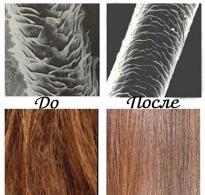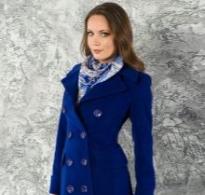A message on the topic of a sewing cutter. Profession: cutter. Requirements for a cutter
Cutter (cutter)- specialist in cutting materials for the manufacture of clothing, shoes and other textile and leather products. The profession is suitable for those who are interested in world artistic culture and work and economy (see choosing a profession based on interest in school subjects).
Features of the profession
What exactly a cutter does depends on his specialization and place of work.
Cutters can specialize in one of the areas (clothing, shoes, curtains, etc.).
Cutter clothing atelier helps the client in choosing a style and fabric, sketches the chosen option, takes measurements, and then makes a pattern and cuts the fabric.
He passes the resulting blanks to a seamstress, who sews the parts together (first “on live thread”).
Before the ordered dress or suit is ready, the cutter meets with the client several times and conducts fittings. He adjusts the product to the figure, eliminates shortcomings, clarifies the client’s wishes, and monitors the quality of the seamstress’s work.
Working at the factory, where clothes, shoes, accessories, furniture upholstery, etc. are mass produced, the cutter does not engage in individual work with the client. He develops and uses patterns for mass cutting of raw materials, and then delivers the blanks to the masters of the sewing workshop.
Working individually, the cutter can do the work of the seamstress himself. Such a master is called the general word “tailor” / “dressmaker”.
Typically, in sewing studios and factories, a clear division of labor is observed. But if the cutter is fluent in all operations, he can work in a group serving a fashion designer (constructor, designer) of clothing. He can create exclusive pieces - the first pieces of models from the designer's collection.
Important qualities
A precise aesthetic sense, an interest in fashion, and the ability to draw and sketch are required; volumetric eye gauge; good hand coordination; communication skills.
Poor eyesight is a contraindication for working as a cutter.
Salary
Salary as of 02/20/2020
Russia 20000—70000 ₽
Moscow 40000—100000 ₽
Knowledge and skills
It is necessary to know modern fashion trends, understand the principles of artistic design, be able to “read” sketches of clothing models and understand what constructive means can be used to bring them to life. To do this, you need to master design and cutting methods.
Where do they teach
The specialty of a tailor-cutter can be obtained at a college, vocational school, or through paid courses.
February 2, 2017Now there are many specialists, thanks to whom various areas of human life develop. One of them is the cutter. This is a professional who cuts materials for sewing clothes, shoes, and textiles. They are hired only after completing training, since without this it will not be possible to perform the activity efficiently.
Features of the profession
A cutter is a specialist who performs work depending on what the production is doing. These include employees in one area, for example, a specialist in clothing, shoes, or curtains. In the atelier, a cutter is a generalist specialist who allows a person to choose a style and fabric. He can also sketch clothes, take measurements, create a pattern, and cut the fabric.
The finished patterns are handed over to the seamstress, who joins the parts together using professional equipment. Before the clothes are fully produced, the client must come several times to try on. Measures are necessary to better fit the product to the figure and eliminate defects. In this case, the wishes of the client are taken into account.
Factory work
In a factory, a cutter is a specialist who does not perform individual work with clients. This type of production produces mass-produced clothing, shoes, and accessories.
It is the responsibility of the cutter to create and use patterns for mass cutting. Then the materials are transferred to the sewing workshop, where the product is completed.
The master's work can be individual, when he performs the functions of a seamstress. Such a specialist is collectively called a “tailor.” But in factories and studios there is a division of responsibilities. When a cutter has various skills, he has the opportunity to become a fashion designer, designer, designer.
Required qualities
The master needs to have an aesthetic sense and an interest in fashion. Required skills are drawing, sketching, and three-dimensional observation. The specialist must have excellent hand coordination and communication skills. With poor eyesight, it is unlikely that you will be able to work in your profession.

In order for a cutter to perform his work at the highest level, you need to know about modern fashion trends, as well as understand artistic design. His activities include the ability to work with sketches, so professional design and cutting skills are required.
Working conditions
Cutters work both independently and in a team. The working place is a cutting table. Pencils, chalk, pens, instruments, and measuring devices serve as assistants. The room should be very light.
If a master with disabilities works, then the working conditions must be those required by the rehabilitation program. All elements of equipment must be suitable for physiological characteristics. A robe, a headdress - a headscarf, and arm ruffles are used as work clothes.
Education
The profession of “Cutter” is in great demand. You can get it at a college or school. Training lasts 1-2 years depending on the program. Usually there are no exams for admission; enrollment occurs after providing documents on secondary education.
After training, a diploma of profession is issued. With the document, you can get a job in a sewing industry or in an atelier. There is also the possibility of further training to improve professional skills.

You can also gain cutting skills through paid courses provided by labor exchanges and training centers. In a short time, basic types of work will be mastered, after which there is the possibility of employment. And salary and prospects will depend on performance results.
Source: fb.ru
Current
Miscellaneous
Miscellaneous
From time immemorial people have sewed clothes. Millennia passed, new fabrics and styles appeared, but clothing remained an indispensable attribute of human life.
The first cutters appeared in Ancient Greece in the 3rd century BC. These specialists enjoyed great honor and respect, and the best masters had the honor of dressing the kings and queens themselves.
In Russia, from the 18th to the 20th centuries, the profession of a cutter was relevant and in demand. Usually men became cutters. Not only the upper strata of society, but also ordinary people turned to the services of cutters. In pre-revolutionary Russia, wearing a ready-made dress was considered the lot of people with limited means; the rich preferred to sew clothes to order. Graduates of cutting and sewing schools and handicraft classes received certificates that gave them the right to work as cutters, open private schools and sewing courses. Pre-revolutionary Russia could boast of an abundance of fashion houses, studios and workshops. In St. Petersburg alone in the 1900s there were more than 120 of them. The famous fashion houses in St. Petersburg were the House of Brizak, the House of Gindus, and the House of Olga Buldenkova, which were suppliers to the Court and worked for the imperial family and court ladies-in-waiting.
At the beginning of the post-Soviet period, a flood of cheap and not always high-quality ready-made clothing poured into Russia. For the most part, people have practically stopped using the services of cutters. But today the situation has changed radically: consumer interest is once again turning to individuality, quality and exclusivity of clothing.
Type and class of profession

The profession of a cutter belongs to the “Man - Artistic Image” type, as it is associated with the creation, design, modeling of artistic products (clothes and shoes).
An additional type of profession is “Man – Sign”, as it is associated with working with sign information: numbers, tables, drawings.
By class, the profession of a cutter is heuristic (creative), since it is associated with creative activity, solving non-standard problems, designing and designing.
A cutter is a master who, at service enterprises, cuts out products from various materials for sewing clothes according to individual orders, and also carries out clothing repairs.
The main thing in a cutter’s activity is to be able to “read” sketches of clothing models and understand what constructive means can be used to bring them to life.
The responsibilities of the cutter include:

Requirements for the knowledge and skills of a specialist
The cutter must know:
general structure and operating rules of sewing machines;
rules and methods of technology and organization of sewing work, design of garments;
methods of cutting fabric;
plastic properties of fabric in compositional construction;
techniques for constructing clothing parts;
principles of designing parts of clothing products;
basics of artistic clothing design (design, model sketch);
modeling and artistic design of clothing;
basics of artistic costume graphics;
features of the choice of styles, materials, design, modeling of products for customers of different ages, shapes and appearance;
methods for eliminating defects and adjusting products to fit, rational use of materials and rates of material consumption for products;
technical documentation involved in the work.
A professional cutter must be aware of the latest trends and be interested in the latest trends in modern fashion, and must also be able to:
carry out cutting when sewing and re-cutting when repairing, updating, altering garments of the coat-suit and dress range, industrial clothing with taking measurements according to the silhouette bases of patterns received from modeling organizations;
select styles of products, sketching them in order passports and taking measurements of the customer’s figure;
make patterns for cutting products of selected styles;
carry out fitting of products on the customer’s figure during the manufacturing process, chamfering and trimming parts after fitting;
check the quality of finished products based on aesthetic, design and ergonomic indicators, hand over finished products to customers;
coordinate with customers the nature of product repairs, identify defects in materials or products brought for repair, renovation, alteration.
Requirements for the individual characteristics of a specialist
The profession of a cutter is suitable for people with slight hearing loss of varying degrees, on the basis of which independent development of speech is possible, since verbal communication with customers of work is assumed. If necessary, the use of special hearing aids is acceptable.

Professionally important qualities of a cutter include:
high level of development of visual-figurative and visual-effective thinking;
creative thinking;
accurate eye;
well-developed color discrimination;
developed spatial imagination;
developed figurative and visual memory;
ability to concentrate;
developed hand-eye coordination and fine motor skills;
interest in new things;
artistic ability;
accuracy, attention to detail;
a penchant for precision work and manual labor.
Working conditions
The cutter's workplace is a table for cutting fabrics. The profession of a cutter is characterized by a large number of manual operations.
In his work, the cutter uses chalk, pencil, pens, mechanical and electrical devices , measuring devices, drawings, patterns.
Working conditions in the workplaces of specialists with hearing impairments must comply with the Individual Rehabilitation Program for a Disabled Person, developed by the Bureau of Medical and Social Expertise.
The design of all elements of production equipment and the organization of the workplace must correspond to the anthropometric, physiological and psychological characteristics, as well as the limited capabilities of working disabled people.
When organizing the work of a cutter with hearing impairments, buildings and premises where activities are carried out must be equipped with information indicators of the fire safety system, as well as visual landmarks: various illuminated signs in the form of symbols and pictograms using a bright color, contrasting with the background surface; Contrasting color coding of inputs. Text information should be as brief as possible. Landmarks indicating the direction of movement must be of the same type for the entire volume of the building and buildings of the same complex.
For hearing impaired professionals, the duration of daily work is determined in accordance with a medical opinion.
Medical contraindications
The main contraindication in the work of a cutter is the inability to perform this work activity in accordance with a medical certificate issued in the manner established by federal laws and other regulatory legal acts of the Russian Federation.

Medical contraindications for working as a cutter include:
complete hearing loss - there is complete absence of hearing or there is residual hearing, on the basis of which independent speech formation is impossible;
significant hearing loss with severe speech underdevelopment;
traumatic brain injury;
severe diseases of the musculoskeletal system with damage to the functions of the upper extremities, with deformation of the hands;
speech and articulation disorders;
mental and nervous diseases (severe and moderate forms of polio);
impaired coordination of movements of the hands and fingers, hand tremors;
mental disorders and behavioral disorders (with moderate and severe persistent or often exacerbating painful manifestations);
mental retardation;
epilepsy;
serious visual impairment, complete loss of vision.
Paths to obtaining a profession
The profession of a cutter is taught in institutions of primary and secondary vocational education and in advanced training courses in the system of additional vocational education.
In the following educational institutions in Moscow that provide vocational training for people with hearing impairments, you can obtain knowledge and skills in the profession of cutter:
Moscow College of Service and Tourism N 29;
Moscow State Specialized Institute
Arts (GSII) of the Russian International Center for Creative Rehabilitation of Disabled People (specialty “Cutter”);
College of Hospitality Industry and Management N 23 (specialty: “Seamstress”, “Cutter”).
Ways to obtain a profession in the regions of the Russian Federation
The necessary professional training to work as a cutter can be obtained in the following educational institutions of the Russian Federation that train people with hearing impairments:
- Sergiev Posad vocational and technical boarding school;
- St. Petersburg Interregional Center for Rehabilitation of Persons with Hearing Problems;
- Novocherkassk Technological College-Boarding School;
- Dimitrovgrad vocational and technical boarding school;
- Armavir vocational-technical boarding school;
- Kineshma Technological Boarding School;
- Kamyshovsky vocational and technical boarding school;
- Chelyabinsk vocational school-boarding school No. 2;
- St. Petersburg Vocational School No. 80;
- Lipetsk Vocational School No. 5;
- Samara Vocational School No. 20;
- Saratov educational complex for disabled people;
- Sarapul College for the Disabled;
- Ivanovo vocational boarding school;
- Ufa Vocational School No. 63;
- Oktyabrsky Professional Lyceum No. 22;.
- Ukholovsky vocational and technical boarding school.
Areas of application of professional knowledge

Cutters work in fashion houses, tailoring and clothing repair shops, in clothing factories, and also do individual work on orders from individuals.
Career prospects
Often, the professional growth of a cutter is due to the development of new techniques and ways of working, the acquisition of new professional experience, and an increase in rank. There is such a way to develop a cutter’s career as mastering related professions in the production of leather goods and fur products.
In addition, a professional cutter with extensive practical experience can successfully carry out teaching activities in specialized educational institutions as a master of industrial training.
If you have a specialized secondary vocational education, a cutter can become the chief cutter and even the manager of a small atelier.
However, the career growth of a cutter is associated not only with the acquisition of practical experience and the ability to solve complex professional problems, but also with an increase in educational level.
Acquiring a specialized higher professional education allows a cutter to work as an artist-fashion designer, fashion designer, director of a fashion house, head of a clothing factory, etc.
There is also an individual entrepreneurial path to developing a career as a cutter, which will provide both creative and financial stability to the specialist.
A cutter is engaged in cutting materials for sewing clothes, shoes and other fabric products. It is the cutter who first communicates with the customer, helps him choose the style of the product and the material for its manufacture. Next, he takes measurements, makes a sketch and cuts the fabric, after which he passes the blanks to the seamstress (tailor).
Sometimes the entire list of work on sewing clothes is performed by one person - a tailor-cutter. Such specialists often work with fashion designers, creating the first samples of clothing for new collections.
The profession of a cutter is suitable for diligent, attentive people with good eyesight, spatial imagination and artistic taste.
Places of work
The position of a cutter is in demand in clothing repair and tailoring ateliers, clothing factories and fashion houses. Also, with extensive experience and appropriate education, a cutter can become a clothing designer.

Responsibilities of the cutter
Main responsibilities of a cutter:
- Communication with the customer (accepting orders, assistance in choosing the style and material of the product).
- Sketching.
- Construction of patterns.
- Cut out the fabrics.
- Carrying out fittings.
- Monitoring the launch of products into production.
Additional responsibilities of a cutter include repairing clothing and other fabric products.
Requirements for a cutter
Main requirements for a cutter:
- Higher or secondary specialized education.
- Drawing skills.
- Skills for high-quality pattern construction.
- Artistic taste.
- Good vision.
In the case of working in an atelier or fashion house, in addition to meeting basic requirements, the cutter must also be aware of fashion trends.

Resume sample
How to become a cutter
You can become a cutter both after 9th and 11th grade of secondary school. This profession is taught in vocational schools, colleges, universities or relevant courses.
Cutter's salary
The cutter's salary varies from 35 to 100 thousand rubles per month. In the case of self-employment, the income of this specialist may be higher than the specified amount. The average salary of a cutter is 65 thousand rubles per month.
Cutter according to the definition of the explanatory dictionary Ozhegova S.I. - is a master of cutting material for sewing dresses (clothes).
Today, clothing performs both a direct “protective” function and an aesthetic one. The requirements for clothing today are very multifaceted. Such concepts as “business woman”, “modern man”, “fashionable girl” have entered our lives. This reflects the role of clothing as an essential element of design not only of a person’s appearance, but also of his life style as a whole.
We can order clothes according to your style and modern fashion in an atelier - a sewing workshop. In the process of making custom-made clothing, the cutter is the link between the client and the order executor - the sewing team. He organizes and controls the work of the team and is responsible for the quality of the executed order.
The cutter works with fabric (leather, fur) and cuts out clothing parts from it. Carrying out this work, he uses patterns (ready-made patterns) or draws a drawing of the style himself, taking into account the measurements taken from the client’s figure. A custom tailor should be able to perform all types of work on sewing men's and women's outerwear, children's clothing or light dresses. In all these areas of clothing manufacturing, cutters specialize and constantly improve their skills.
A cutter works in a tailoring and clothing repair studio, as well as in clothing factories.
The profession of a cutter is characterized by a large number of manual operations. Therefore, quantitative and qualitative indicators of labor depend on the skill of the worker.
- Taking measurements from the client (customer):
- finding out the client’s wishes and sketching the chosen style option, drawing up an order passport;
- making patterns for cutting;
- performing economical layout of patterns on fabric and cutting fabric;
- reshaping individual parts (when repairing clothes);
- determining the order of sewing operations and their distribution among the masters of the sewing team;
- performing fittings and handing over the order to the client;
- checking the quality of finished products, eliminating identified defects.
The main goal of the cutter’s activity is assistance in choosing a style and cutting the product in accordance with the fashion trend, the characteristics of the customer’s figure and appearance, the purpose and sewing properties of the fabric.
In his work, the cutter uses manual tools (centimeter, ruler, patterns, chalk, pattern drawings); mechanical (scissors); electric (knife-cutter, electric machine) means of labor.
Professionally important qualities
Sense of proportion and color harmony
Spatial imagination
Visual-figurative thinking
High level of hand coordination
Endurance of the visual apparatus
Personal organization
Neuropsychic stability
Accuracy
Medical contraindications
Related professions
Artist-fashion designer, tailor, furrier-cutter.






